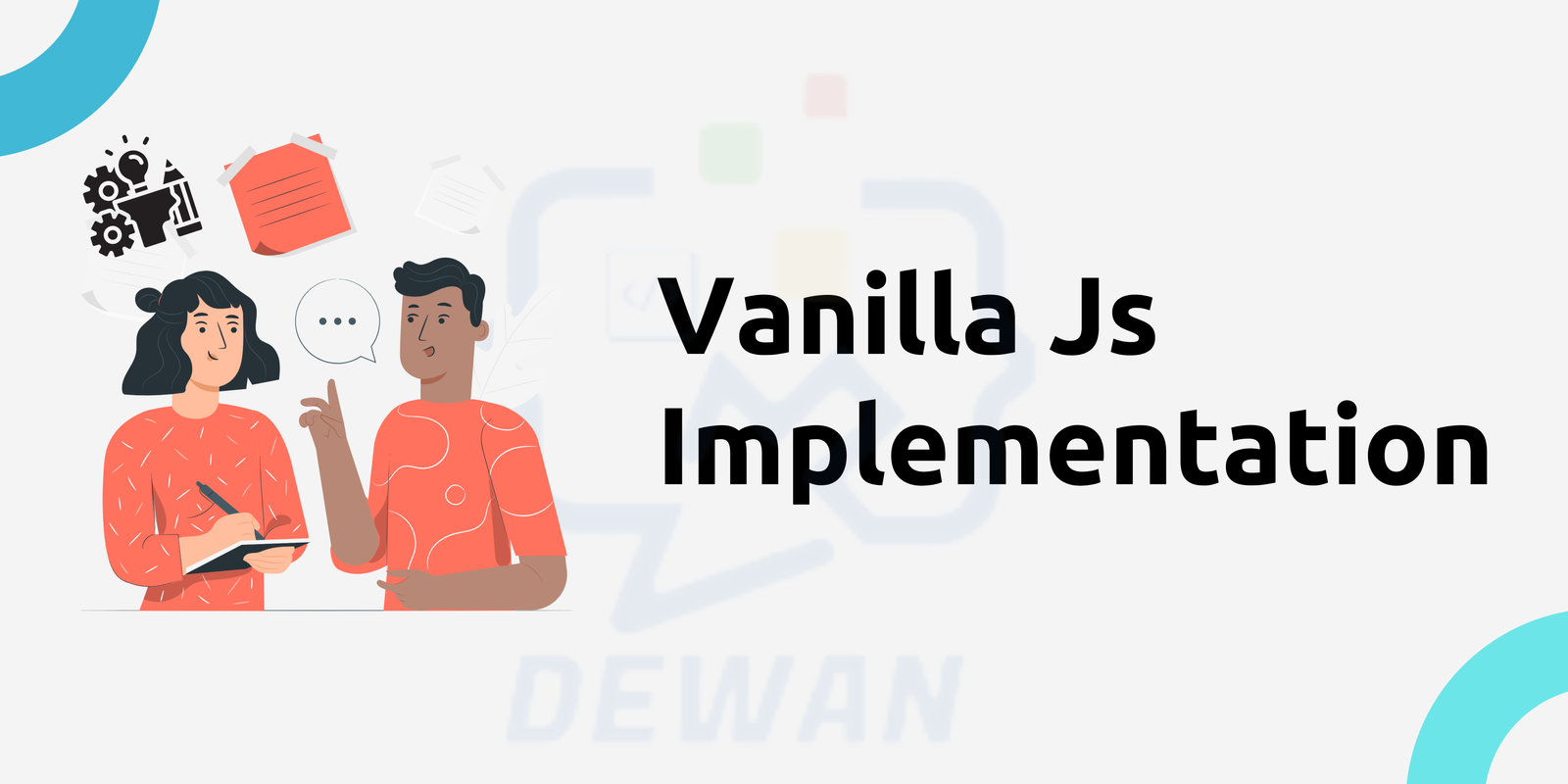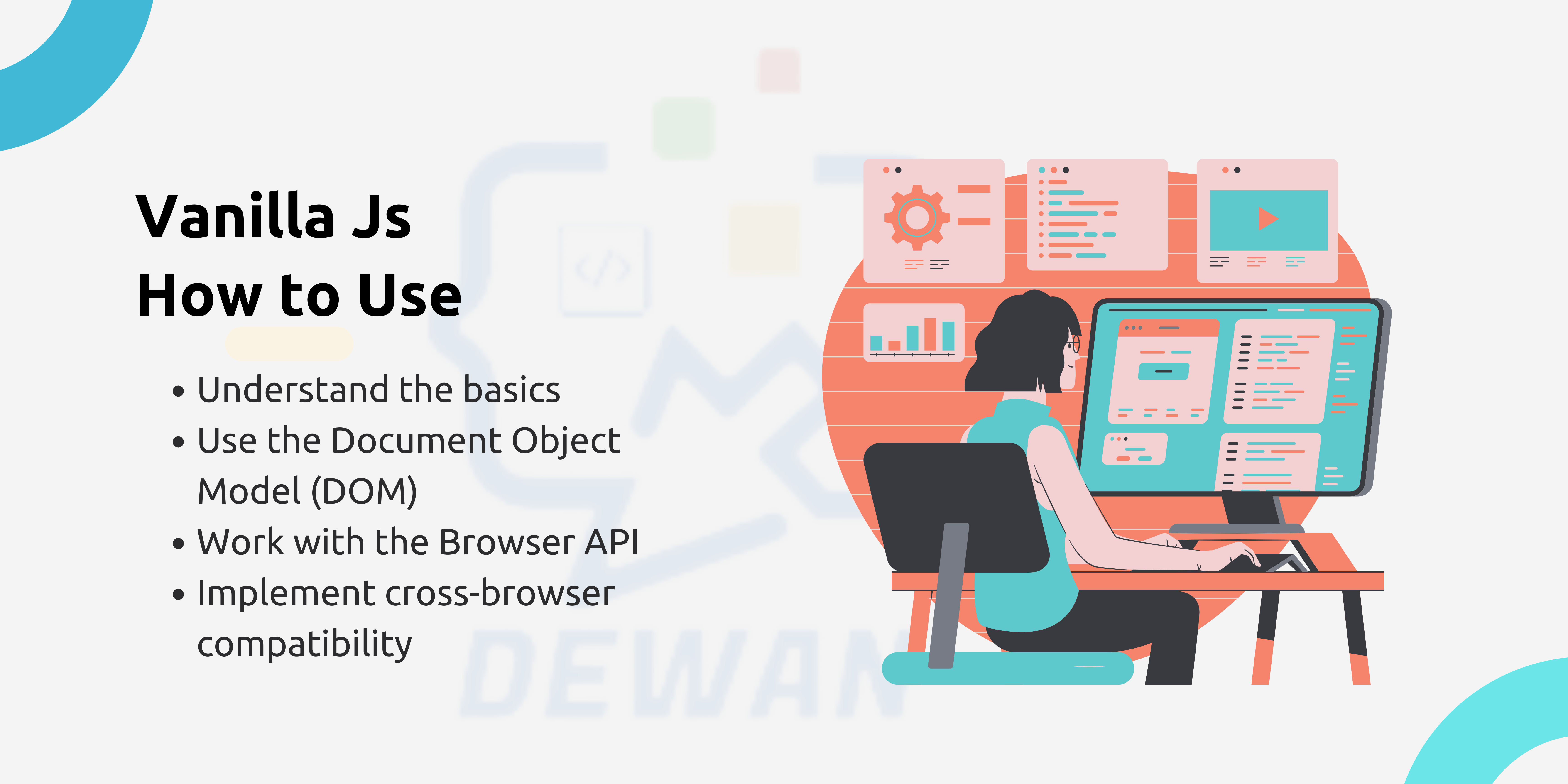
Introduction
Vanilla JS, is a period used to describe JavaScript code written without using any additional libraries or frameworks. it's by far the middle JavaScript language that serves as the inspiration upon which more advanced JavaScript frameworks are built. Vanilla JS offers numerous benefits, together with higher manipulation over the codebase, improved overall performance, and simpler debugging. In this newsletter, we will explore diverse elements of Vanilla JS, such as DOM manipulation, occasion dealing with, asynchronous programming, running with APIs, building person interfaces, and testing and debugging strategies. By gaining knowledge of those principles, you could create engaging internet experiences with the usage of Vanilla JS, showcasing the energy and versatility of the middle JavaScript language.
Understanding Vanilla JavaScript
Vanilla JavaScript refers to JavaScript code written where we do now not want any extra frameworks or libraries. it is the muse upon which more superior JavaScript frameworks are constructed. Vanilla JavaScript gives numerous benefits, such as higher manipulation over the codebase, improved overall performance, and simpler debugging.
DOM Manipulation in Vanilla JS
DOM Manipulation refers to the technique of interacting with and enhancing the record object model (DOM) of a webpage with the usage of JavaScript. In Vanilla JS, you could manage the DOM to dynamically replace, create, or take away factors on a website. here are a few key strategies and techniques for DOM manipulation in Vanilla JS.

Accessing Elements
To manipulate factors on a website, you first want to access them with the use of various techniques like getElementById(),querySelector(), and querySelectorAll().
getElementById(identification): This method retrieves a detail of the use of its unique id.
querySelector(selector): This method returns the primary element that suits the furnished CSS selector.
querySelectorAll(selector): This technique returns all factors that shape the furnished CSS selector.
Modifying Elements
Once you've got accessed the preferred elements, you can manipulate them with the usage of various houses and techniques.
innerHTML: This asset permits you to set or retrieve the HTML content of a detail.
innerText: This belonging sets or retrieves the text content of a detail, ignoring HTML tags.
textContent: This property sets or retrieves the obvious text content material of an element, along with HTML tags.
classList: This property allows you to govern the CSS lessons of an element, including, getting rid of, or toggling training.
fashion: This belonging permits you to regulate the inline CSS kinds of detail.
Creating and Inserting Elements
You can also dynamically create new elements and insert them into the DOM with the use of the subsequent techniques.
report.createElement(tagName): This approach creates a new element with the specified tag name.
parentNode.appendChild(newElement): This method appends a brand new detail because of the last baby of its discern node.
parentNode.insertBefore(newElement, referenceNode): This method inserts a brand new element before a particular reference node within its determined node.
You may also like to read : Why composer is necessary for Drupal installations or upgrades?
Removing Elements
To take away factors from the DOM, you may use the subsequent techniques.
element.eliminate(): This technique gets rid of the specified element from its parent node.
parentNode.removeChild(toddler): This approach eliminates a toddler element from its figure node.
By studying those DOM manipulation techniques in Vanilla JS, you may create dynamic and interactive web applications without difficulty.
Event Handling in Vanilla JS

Occasion dealing with Vanilla JavaScript allows you to respond to user interactions and browser sports inside your internet applications. via attaching occasion listeners to HTML factors, you may create dynamic and responsive consumer reports. here's an overview of events coping with Vanilla JS.
Event Listeners
Event listeners are features that execute whilst a particular occasion takes place. to connect an occasion listener to an HTML element, you can use the addEventListener() approach.
element.addEventListener(eventType, eventHandler);
element: The HTML element to which you need to connect the event listener.
eventType: The sort of event you need to pay attention to, including "click", "mouseover", or "keypress".
eventHandler: The characteristic to be achieved while the required occasion occurs.
Common Event Types
Some not-unusual event sorts you can need to listen for your Vanilla JS packages include.
click on: Fired whilst a person clicks on a detail.
mouseover: Fired whilst a person's mouse pointer enters a detail.
mouseout: Fired while a user's mouse pointer leaves a detail.
load: Fired whilst an internet page has completed loading.
scroll: Fired whilst a user scrolls inside an element.
Event Object
When an occasion occurs, a popular event item is handed to the occasion handler characteristic. you could get the right of entry to this object because of the first parameter of the event handler feature.
Event Propagation
Occasion propagation, also referred to as occasion effervescent, refers back to the sequence in which occasions are processed through the DOM. occasions first bubble up from the goal element to its parent, and then to the root detail. you may use occasion propagation to address occasions at distinctive stages of the DOM.
occasion.stopPropagation(): This approach prevents the event from bubbling similarly up the DOM.
event.preventDefault(): This technique cancels the default action associated with the occasion, which includes following a hyperlink or filling out a form.
Asynchronous Programming
Asynchronous programming in vanilla JavaScript refers to dealing with responsibilities that do not block the primary execution thread, allowing the program to keep jogging other responsibilities even as looking forward to the crowning glory of an operation. this is in particular beneficial whilst coping with time-consuming duties like network requests or report operations.
To reap asynchronous programming in JavaScript, you can use callbacks, guarantees, and async/await. here's a brief assessment of every.
Callbacks
A callback characteristic is surpassed as a controversy to another feature and is invoked with the aid of that feature as part of its processing. it's miles a commonplace pattern for asynchronous operations in JavaScript.
Promises
Promises offer an extra stylish and readable manner to handle asynchronous operations. They let you connect callbacks to the end result of an operation and execute code relying on the end result (fulfilled or rejected).
Async/Await
That is an extra latest and current technique for managing asynchronous operations in JavaScript. It makes use of the async characteristic and the await keyword to jot down asynchronous code that appears and seems like synchronous code.
Those strategies assist you control asynchronous programming in vanilla JavaScript efficaciously, making sure your code remains responsive and efficient.
Building User Interfaces
Building person interfaces (UIs) in vanilla JavaScript entails growing, manipulating, and styling HTML factors dynamically. even as JavaScript is usually used for interactivity and functionality, it could also be used to create and control UI factors.
Right here's an overview of a way to build user interfaces in vanilla JavaScript.
DOM manipulation
The document object version (DOM) represents the shape of an HTML document and lets you govern its factors in the usage of JavaScript. you may create, modify, and delete factors, in addition to changing their attributes and patterns.
CSS styling
To fashion your UI factors, you could use CSS houses and selectors along with JavaScript. This allows you to use patterns dynamically based totally on user interactions or other situations.
Layout and positioning
You could role and arrange elements on the web page with the use of CSS homes like position, top, left, right, bottom, width, and top.
Responsive and adaptive UI
To create responsive and adaptive UIs, you could use media queries and JavaScript to regulate the layout and styling primarily based on the display size or other conditions.
By way of leveraging DOM manipulation, CSS styling, layout, and responsive techniques, you can construct consumer interfaces in vanilla JavaScript which might be interactive, responsive, and visually appealing.
Custom Components
By combining HTML, CSS, and JavaScript, you could create reusable custom additives that beautify the person's enjoyment.
Animations
Vanilla JavaScript allows you to create easy and visually appealing animations with the use of the requestAnimationFrame() feature, CSS animations, and transform houses.
Testing and Debugging

Trying out and debugging vanilla JavaScript programs is crucial to make certain the code functions as expected and to pick out and connect any problems that can arise. here are a few strategies and equipment that will help you take a look at and debug your vanilla JavaScript code.
Console logging
Use the browser's developer console to log variables, objects, and other statistics to help you understand the state of your utility at specific points.
Debugging with breakpoints
Set breakpoints in your code usage the developer tools to pause the execution and check out the nation of your software at unique factors. this will assist you become aware of problems and apprehend the glide of your code.
Example (using breakpoints in Google Chrome DevTools)
a. Open the developer equipment (proper-click > inspect or F12).
b. Navigate to the "assets" tab.
c. find your JavaScript document inside the left panel.
d. click on the line-wide variety in which you want to set a breakpoint. A red dot will appear.
e. Refresh the page or trigger the breakpoint on your code. The execution will pause, and you may inspect variables and step through the code.
Unit testing
Use unit testing frameworks like Jest, Mocha, or Jasmine to write and run checks in your JavaScript code. those frameworks provide assertion libraries and check runners to make sure your code behaves as predicted.
Linting and code quality tools
Make use of linting equipment like ESLint or JSHint to perceive ability errors, code fashion inconsistencies, and other issues with your JavaScript code. those gear allow you to hold a codebase and make it less difficult for others to recognize and contribute to your undertaking.
Example (using ESLint)
a. Deploy ESLint: `npm installation --store-dev eslint`.
b. Initialize ESLint: `npx eslint --init`.
c. Follow the activities to configure ESLint in line with your challenge's wishes.
d. Add a configuration record (`.eslintrc.json`) on your assignment.
e. Run ESLint to your JavaScript files: `npx eslint your-document.js`.
Error handling and logging
Enforce the right error handling and logging in your JavaScript code that will help you perceive and connect troubles extra successfully. Use `strive-trap` blocks, throw custom errors, and log errors to the console or a dedicated logging carrier.
By way of the use of the ones strategies and tools, you could efficiently take a look at and debug your vanilla JavaScript applications, making sure they feature successfully and are clean to keep and amplify.
Conclusion
In the end, vanilla JavaScript is a powerful and bendy approach to internet development that lets in builders to create dynamic, interactive, and responsive consumer reviews without relying on external frameworks or libraries. By leveraging the local talents of JavaScript, HTML, and CSS, builders can construct modular, maintainable, and excessive-overall performance programs that are tailor-made to their unique desires. Developing custom additives in vanilla JavaScript involves defining the element shape, styling it with CSS, and encapsulating its capability within a JavaScript class.
This modular technique allows for organizing code and selling reusability. Trying out and debugging vanilla JavaScript applications is crucial for ensuring the code functions as anticipated and for identifying and fixing any problems that may arise. Strategies which include console logging, debugging with breakpoints, unit checking out, linting, and proper mistakes dealing with and logging can help builders hold a codebase and make their packages more strong and reliable. In precis, vanilla JavaScript gives developers a versatile and efficient way to create net packages, permitting them to have complete manipulation over their codebase even while still profiting from the energy and versatility of JavaScript.
